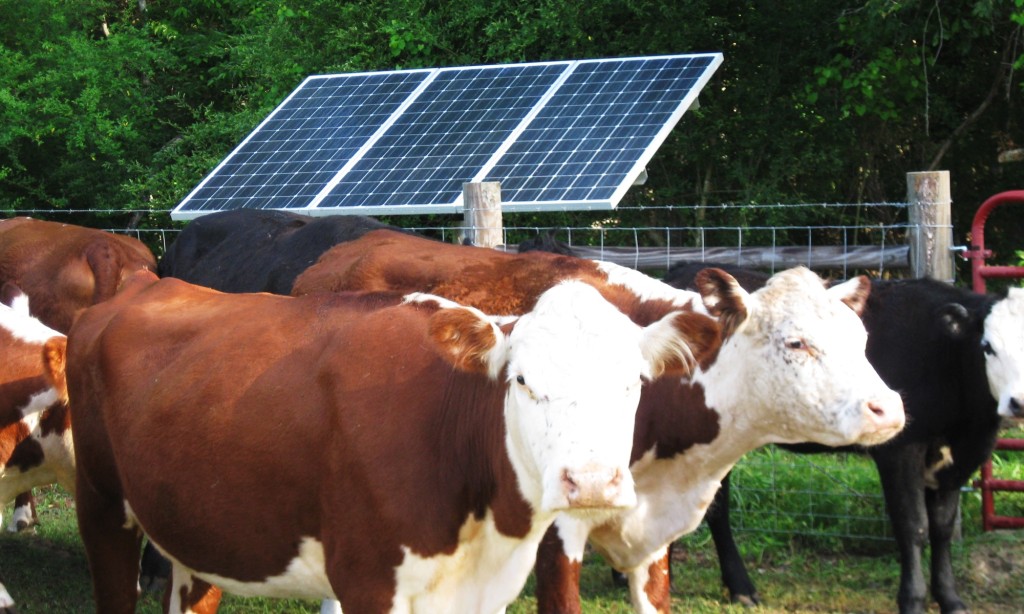Study looks at U.S. climate change mitigation related to forestry and agriculture
Researchers investigate scenarios to help develop policies, programs
Climate change mitigation investments in carbon sequestration related to forest management can help offset greenhouse gas emissions from U.S. crop and livestock production, according to a collaborative study that included a leading authority from Texas A&M University.

A new study published in the Journal of Forest Economics investigates the role of U.S. agriculture and forestry in greenhouse gas mitigation.
Bruce McCarl, Ph.D., an agricultural economist in the Department of Agricultural Economics in the Texas A&M College of Agriculture and Life Sciences, was among the governmental and academic experts collaborating on this research published with the help of the nonprofit Research Triangle Institute, RTI, and the U.S. Environmental Protection Agency.
McCarl said results of the study will help decision-makers assess opportunities for greenhouse gas mitigation in forestry and agricultural systems as well as better understand how mitigation costs may change over time and under fluctuating economic conditions.
“For the study, we looked at different greenhouse gas emission reduction and sequestration possibilities,” McCarl said. “We tried to show how important agricultural and forestry climate mitigation actions could be to meeting our international responsibilities under the Paris Agreement.”
National soil carbon and forest sequestration impact as well as emission control programs are considered ways to help meet these international obligations, McCarl said.
“We investigated cost levels at which agriculture and forest actions could reasonably participate in climate mitigation efforts,” he said. “Both cost and the limitations of physical factors — like the amount of land needed — were considered when trying to determine the cost and efficacy of carbon sequestration efforts.”
Research approach and findings

McCarl said the study shows that income and increasing demand for agricultural commodities are positively related to agricultural and forest product consumption and, in turn, relate to greenhouse gas emissions and sequestration in agriculture and forestry.
The proportion falls to approximately 28% in low-growth scenarios due to reduced baseline investments in forests and lower resulting opportunity costs of mitigation.
“Our results demonstrate how various levels of mitigation investments could be prioritized over time under different socioeconomic conditions and offer insights into complementary policies that could increase the land carbon sink by stimulating forest management,” McCarl explained. “Our approach differs from integrated assessment or economy-wide modeling studies of climate policy pathways in which mitigation prices or sector-specific contributions are the result of other inputs.”
Land-based climate change abatement
Climate change abatement activities related to soil have previously been viewed as a low-cost option for greenhouse gas mitigation, therefore a key factor to reach the nation’s climate change mitigation goals, McCarl said. However, a “key knowledge gap” has come to light regarding how greenhouse gas mitigation costs interconnect with socioeconomics and policy factors like incentives, such as carbon credits.
“While energy efficiency and other technological aspects have much to do with projecting greenhouse gas mitigation potential, the cost to various sectors, such as forestry and agriculture, requires a holistic assessment of the economics,” he said. “A complete assessment that shows these interactions can help guide policy and mitigation efforts of federal and regional stakeholders along with investment strategies of the private sector.”
Shared socioeconomic pathways for climate change
The future pathways of climate change and societal growth are uncertain. To represent this, the researchers used “shared socioeconomic pathways” or SSPs to reflect a wide range of plausible population, socioeconomic, energy use, geopolitical and carbon policy futures. Their use allowed the research team to highlight the importance of formulating mitigation strategies that work well under alternative future societal pathways so as to best judge the greenhouse gas mitigation role of the nation’s forest and agriculture sectors.
“We needed to look at how much greenhouse gas may be in the air in the future and put that in the context of various factors,” McCarl said. “These scenarios will help us anticipate needed mitigation efforts as it takes a long time between the initiation of mitigation action and the climate response. They also inform us on the actions needed to significantly imit the extent of future climate change.”
Each pathway baseline scenario reflects different assumptions of gross domestic product, population growth, urban development, energy efficiency and demand growth for agricultural and forest commodities due to changes in population, dietary preferences, trade and shifts in agricultural productivity growth.
“In the study, we use atmospheric greenhouse gas and climate projections associated with each SSP, then examine possible mitigation strategies,” McCarl said
He said the research focuses on activities that enhance land-based carbon sequestration, reduce energy-related carbon dioxide emissions from agricultural and forest sector operations and reduce non-carbon dioxide emissions from crop and livestock production systems.
“This approach provides a more complete assessment of agriculture and forestry mitigation potential under future scenarios by explicitly capturing socioeconomic-driven changes in opportunity costs, he said. “The consideration of different mitigation strategies allows the ability to distinguish between demand or socioeconomically driven changes in emissions and sequestration from those driven directly by policy incentives.”


